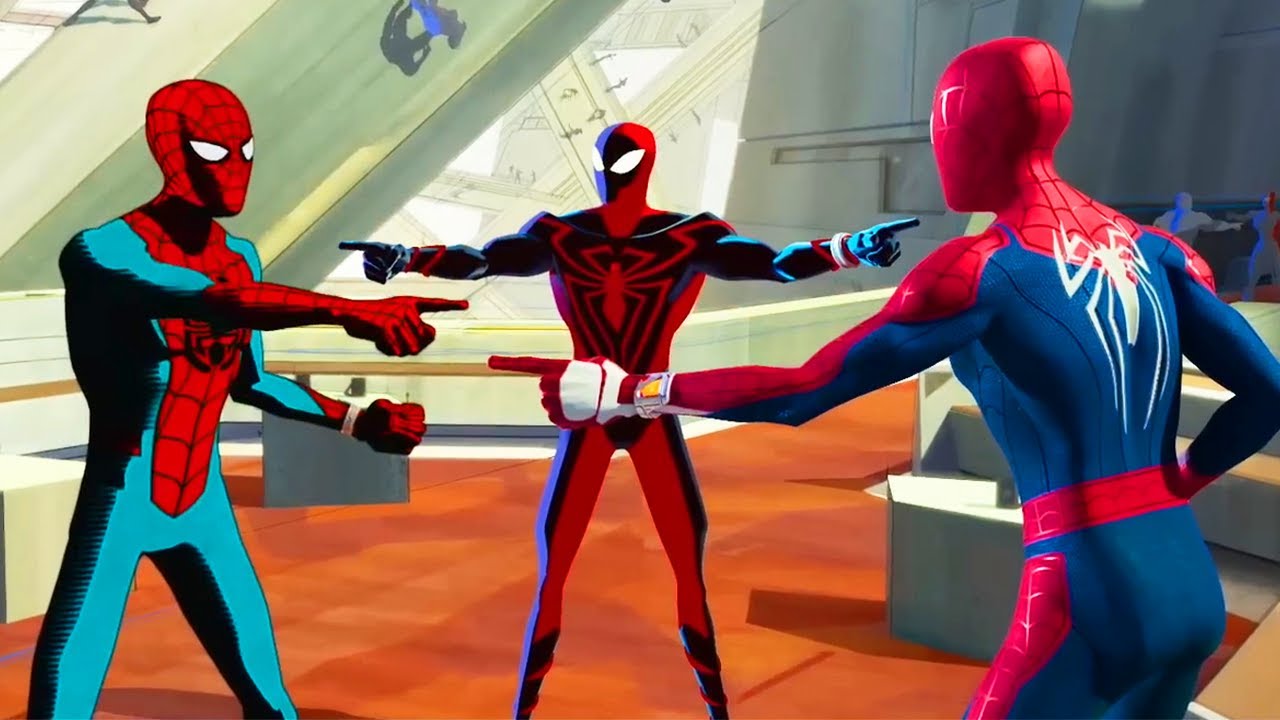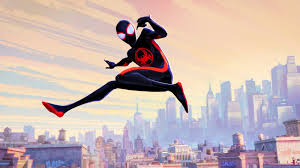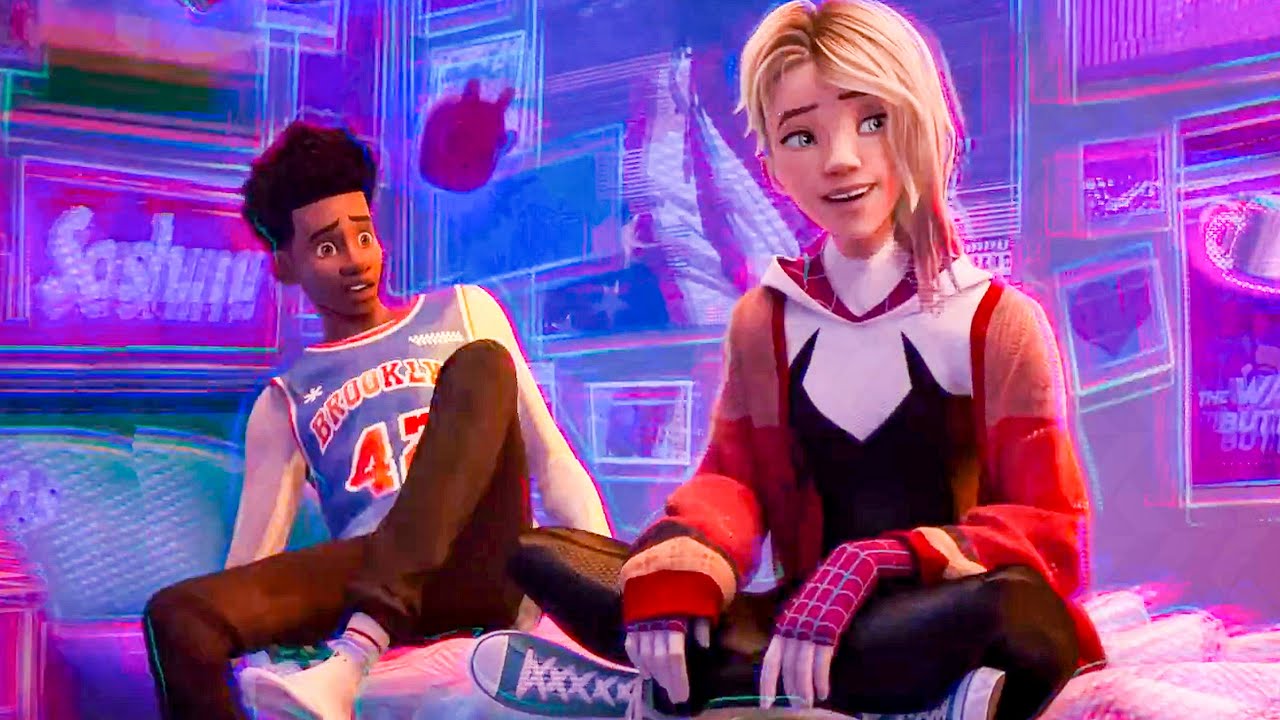🎬 Spider-Man: Across the Spider-Verse (2023)

🎬 Spider-Man: Across the Spider-Verse (2023)
IMDb: 8.9/10 | Directed by Joaquim Dos Santos, Kemp Powers, and Justin K. Thompson | Starring Shameik Moore, Hailee Steinfeld, Oscar Isaac
“Let’s do things differently this time.”
Introduction
Spider-Man: Across the Spider-Verse (2023) swings audiences back into the vibrant, multi-dimensional world of Spider-People. As a sequel to the groundbreaking Spider-Man: Into the Spider-Verse (2018), this film takes everything that made the original special and elevates it to new heights. Packed with stunning visuals, a gripping storyline, and a deeper exploration of its characters, Across the Spider-Verse cements itself as not just a remarkable animated feature but one of the best superhero films ever made.
Plot Summary
Miles Morales (Shameik Moore) returns as Brooklyn’s friendly neighborhood Spider-Man. A year after the events of the first film, Miles has grown into his role as a hero but struggles with balancing his double life. When Gwen Stacy (Hailee Steinfeld) re-enters his life, she introduces him to the Spider-Society, a group of Spider-People from across the multiverse dedicated to protecting the fabric of their realities.
However, Miles quickly discovers that being a hero comes with difficult choices. Confronted by Miguel O’Hara (Oscar Isaac), also known as Spider-Man 2099, Miles is forced to question what it truly means to be a hero. As a new threat emerges, one that could unravel the multiverse itself, Miles must navigate alliances, betrayals, and the weight of his own destiny to save those he loves.
Visual Splendor
Innovative Animation Styles
The animation in Across the Spider-Verse is nothing short of revolutionary. Each universe visited by the characters boasts a distinct artistic style, reflecting the uniqueness of its Spider-Person. From watercolor aesthetics in Gwen’s world to the futuristic, neon-drenched tones of Miguel’s reality, the film is a visual masterpiece that feels like a living comic book. The seamless blending of these styles creates a dynamic and immersive experience unlike anything else in animation.
Color Palette and Framing
The film’s use of color and framing elevates its storytelling. Emotional moments are accentuated by bold, contrasting hues, while fast-paced action sequences are rendered with exhilarating fluidity. Each frame is meticulously crafted, making every moment worthy of being paused and admired as a standalone piece of art.
Character Development
Miles Morales: A Hero Growing Up
Miles’ journey in this film is deeply personal. While the first movie focused on him stepping into his role as Spider-Man, this sequel explores the struggles of responsibility and identity. Miles faces dilemmas that test his morality and strength, showing that being a hero isn’t just about saving the day but making difficult choices. His relationships with his parents, Rio and Jefferson, add emotional depth, grounding the fantastical elements in relatable familial conflicts.
Gwen Stacy: A Hero’s Burden
Gwen’s character takes center stage as her story is given greater focus. Her struggles with isolation and guilt mirror Miles’ own challenges, making their bond all the more compelling. Gwen’s arc underscores the theme of finding strength in vulnerability, and her role as a co-lead adds layers to the narrative.
Miguel O’Hara: The Relentless Leader
Oscar Isaac’s Miguel O’Hara is a standout addition to the cast. As the leader of the Spider-Society, Miguel’s no-nonsense approach and tragic backstory create a complex antagonist. His rigid adherence to preserving the multiverse’s “canon events” brings tension and moral ambiguity, challenging Miles and the audience to question the cost of heroism.
Themes and Messages
Identity and Choice
At its core, Across the Spider-Verse is about identity and choice. Miles’ struggle to define himself beyond expectations resonates deeply, especially for audiences navigating their own paths in life. The film’s exploration of individuality within a collective—as each Spider-Person is both unique and part of a larger web—is a powerful reminder of the strength found in diversity.
The Weight of Destiny
The concept of “canon events” introduces a philosophical layer to the story. Can destiny be rewritten, or must certain tragedies occur to shape us into who we are? This theme adds depth to the narrative, raising questions about free will, sacrifice, and the true meaning of being a hero.
Standout Moments
- The Spider-Society Chase
Miles’ daring escape from the Spider-Society is one of the most exhilarating sequences in the film. With hundreds of Spider-People pursuing him, the scene is a visual and emotional rollercoaster, blending humor, tension, and jaw-dropping animation. - Gwen’s Reconciliation with Her Father
This heartfelt moment showcases the film’s emotional depth. Gwen’s vulnerability and her father’s unconditional love are beautifully portrayed, making it one of the film’s most poignant scenes. - The Cliffhanger Ending
Without revealing spoilers, the film’s ending leaves audiences on the edge of their seats, setting up the stakes for the upcoming sequel, Beyond the Spider-Verse. It’s a bold and daring move that solidifies the trilogy’s ambition.
The Soundtrack: A Sonic Web
Music plays a crucial role in amplifying the film’s energy and emotion. Composed by Daniel Pemberton, the score seamlessly blends electronic beats with orchestral elements, mirroring the film’s fusion of modernity and tradition. Songs like “Am I Dreaming” and “Self-Love” resonate with the film’s themes, making the soundtrack an integral part of the storytelling.
Criticisms
While Across the Spider-Verse is a near-perfect film, its dense narrative and cliffhanger ending may leave some viewers feeling overwhelmed. The film’s pacing, packed with rapid-fire dialogue and non-stop action, demands close attention, which could be challenging for younger audiences.
Additionally, the focus on setting up the next installment, while exciting, means that certain storylines feel incomplete. However, these are minor criticisms in an otherwise stellar movie.
Cultural Impact and Legacy
Spider-Man: Across the Spider-Verse is more than just a sequel; it’s a celebration of Spider-Man’s enduring legacy. By embracing the multiverse concept, the film pays homage to decades of Spider-Man lore while pushing the boundaries of animation and storytelling. Its emphasis on diversity and representation—with characters like Miles, Gwen, and Pavitr Prabhakar (Spider-Man India)—ensures that every viewer can see themselves reflected in the Spider-Verse.
Final Thoughts
Spider-Man: Across the Spider-Verse (2023) is a triumph of storytelling, animation, and heart. It takes the foundation laid by its predecessor and builds a richer, more expansive narrative that challenges and inspires. With its breathtaking visuals, complex characters, and thought-provoking themes, it’s a film that demands to be experienced on the biggest screen possible.
Whether you’re a lifelong Spider-Man fan or new to the franchise, this film invites you to swing into a world where anyone can wear the mask. And as the credits roll, one thing is certain: the Spider-Verse is only getting started.
Hashtags:
#SpiderMan #AcrossTheSpiderVerse #MilesMorales #GwenStacy #Multiverse #SpiderVerse #OscarIsaac #AnimationMasterpiece











